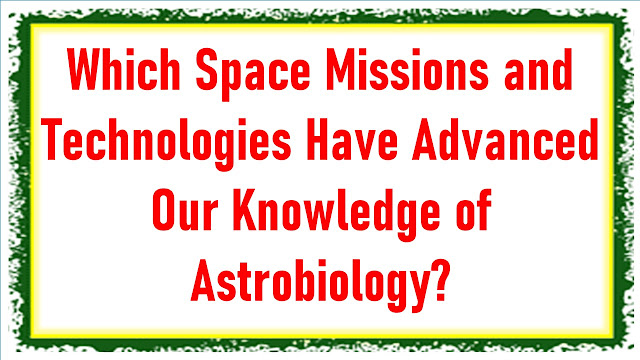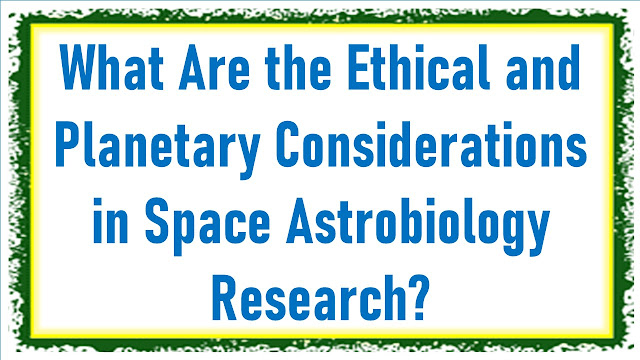
Introduction.
In this article, I’ll delve into the captivating realm of astrobiology, a field that seeks to answer one of humanity’s most profound questions: are we alone in the universe? Over the decades, space exploration has unveiled a treasure trove of missions and technologies that have dramatically expanded our understanding of astrobiology. From probing the icy depths of distant moons to peering into the atmospheres of exoplanets light-years away, these scientific endeavors have pushed the boundaries of human knowledge, fueling our curiosity about the potential for extraterrestrial life.
Through a captivating journey, we’ll explore some of the most pioneering space missions and cutting-edge technologies that have revolutionized astrobiology, shedding light on the fundamental conditions for life beyond our home planet. Join me as we embark on a voyage through the cosmos, uncovering the remarkable discoveries and breakthroughs that have brought us closer to answering the age-old question of whether life exists beyond Earth.
- Mars Rovers: Exploration for signs of ancient life on Mars.
- Exoplanet Telescopes: Discovering potentially habitable exoplanets and biosignatures.
- Europa Clipper: Investigating subsurface oceans on Jupiter’s moon Europa.
- SETI: Search for extraterrestrial intelligence through radio signals.
- Astrobiology Labs on ISS: Microgravity experiments on extremophiles.
- Sample Return Missions: Collecting and analyzing materials from celestial bodies.
Mars Rovers: Exploration for signs of ancient life on Mars.
Mars rovers, such as the Curiosity and Perseverance rovers, have played a pivotal role in advancing our knowledge of astrobiology. These robotic explorers have been equipped with sophisticated instruments designed to detect and analyze various aspects of the Martian environment, including the search for signs of past or present life.
Curiosity, for instance, has explored the Gale Crater and uncovered evidence of ancient water flows, which suggests the possibility of a habitable environment in Mars’ distant past. It has also analyzed Martian rocks and soil for organic molecules, further hinting at the potential for past life. Perseverance, the most recent Mars rover, is specifically tasked with seeking signs of ancient microbial life by collecting rock and regolith samples that will eventually be returned to Earth for detailed analysis.
These missions have significantly advanced our understanding of the potential habitability of Mars and its geological history, shedding light on the conditions that may have supported life in the past and informing our search for life beyond Earth.
Exoplanet Telescopes: Discovering potentially habitable exoplanets and biosignatures.
Exoplanet telescopes, such as the Kepler Space Telescope and the James Webb Space Telescope (JWST), have revolutionized the field of astrobiology by allowing scientists to detect and study planets orbiting distant stars. Kepler, for example, identified thousands of exoplanets, many of which are located in the habitable zone, where conditions might be suitable for liquid water and potentially life.
JWST, with its advanced instruments, promises to take exoplanet research to the next level by characterizing the atmospheres of these distant worlds. This capability is crucial for identifying biosignatures—chemical compounds that could indicate the presence of life, such as oxygen and methane—in the atmospheres of exoplanets.
These telescopes have expanded our understanding of the prevalence of exoplanets and the potential for habitability beyond our solar system, bringing us closer to answering the fundamental question of whether life exists elsewhere in the universe.
Europa Clipper: Investigating subsurface oceans on Jupiter’s moon Europa.
The Europa Clipper mission is set to explore Jupiter’s moon Europa, which is believed to have a subsurface ocean beneath its icy crust. This moon has garnered significant attention in the search for extraterrestrial life because of the potential habitability of its subsurface ocean.
Europa Clipper aims to study the moon’s surface, ice shell, and subsurface ocean, focusing on the plumes of water vapor that erupt from its surface. These plumes provide a unique opportunity to analyze the composition of Europa’s subsurface ocean, which could potentially harbor life. The mission will also investigate the radiation environment on Europa, crucial for understanding the conditions that any potential life forms would have to contend with.
By exploring Europa, this mission contributes to our understanding of the potential habitability of icy worlds in our own solar system and informs our search for life beyond Earth in environments that are radically different from our planet’s surface.
SETI: Search for extraterrestrial intelligence through radio signals.
The Search for Extraterrestrial Intelligence (SETI) is a pioneering effort dedicated to scanning the cosmos for signs of intelligent life. It involves the use of radio telescopes and other radio-frequency receivers to listen for anomalous signals that could indicate communication from advanced civilizations.
Organizations like the SETI Institute have been at the forefront of this quest, employing a distributed network of radio telescopes to monitor a wide range of frequencies. While there have been tantalizing moments of excitement, such as the famous “Wow! signal,” definitive proof of extraterrestrial intelligence remains elusive. Nevertheless, SETI continues to advance our understanding of the potential distribution and nature of intelligent life in the universe.
The search for extraterrestrial intelligence is a critical component of astrobiology, as it probes the possibility of civilizations beyond Earth and prompts us to consider the various forms life might take on other worlds.
Astrobiology Labs on ISS: Microgravity experiments on extremophiles.
The International Space Station (ISS) has served as a unique platform for astrobiology research, particularly in understanding how microgravity and extreme conditions of space affect life. Researchers aboard the ISS have conducted experiments on extremophiles—organisms that thrive in extreme environments on Earth, such as extreme cold, heat, or radiation.
These experiments help us understand the limits of life’s adaptability and resilience, which is crucial for assessing the potential habitability of other planets and moons. They also provide insights into the challenges that terrestrial organisms would face during long-duration space travel or colonization of other celestial bodies.
Astrobiology studies on the ISS have advanced our knowledge of how life responds to extreme conditions, contributing to the broader understanding of life’s potential existence and adaptation in space and on other celestial bodies.
Sample Return Missions: Collecting and analyzing materials from celestial bodies.
Sample return missions, such as NASA’s OSIRIS-REx mission to the asteroid Bennu and the upcoming Mars Sample Return mission, have been instrumental in advancing astrobiology by enabling scientists to directly study materials from celestial bodies.
OSIRIS-REx successfully collected a sample from Bennu’s surface and returned it to Earth, providing scientists with a pristine sample from an asteroid, which is a remnant of the early solar system. This mission contributes to our understanding of the organic molecules and potential building blocks of life that may have been delivered to Earth through asteroid impacts.
The Mars Sample Return mission, a joint effort between NASA and the European Space Agency, plans to collect samples from the Martian surface and bring them back to Earth for detailed analysis. These samples could contain crucial information about Mars’ past and the possibility of ancient life on the planet.
Conclusion.
I hope this exploration of space missions and technologies dedicated to advancing our understanding of astrobiology has highlighted the remarkable strides made in our quest to unravel the mysteries of life beyond Earth. Over the decades, missions like the Mars rovers, Cassini-Huygens, and the Kepler Space Telescope have transformed our knowledge of astrobiology. These missions have not only revealed the potential habitability of celestial bodies but have also provided vital clues about the fundamental building blocks of life.
Furthermore, cutting-edge technologies such as next-generation sequencing and spectroscopy have enhanced our ability to detect and analyze organic compounds, reinforcing our belief that life may exist beyond our planet. As we continue to push the boundaries of space exploration, it is imperative that we invest in future missions and technologies that will further deepen our understanding of astrobiology. With each mission, we draw closer to answering the age-old question of whether we are alone in the universe, and these advancements serve as a testament to humanity’s relentless pursuit of knowledge and our unyielding curiosity about the cosmos.










